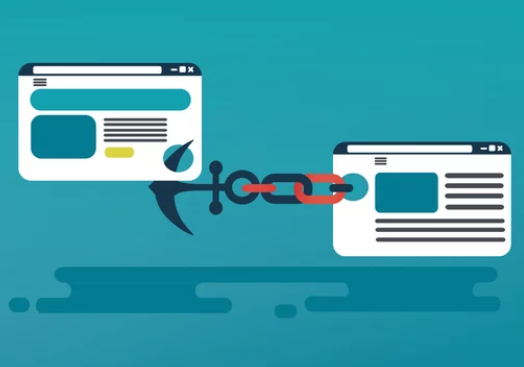What Makes Quality Backlinks?

What are Quality Backlinks?
High domain authority (DA) websites that are respectable and well-trusted by both users and search engines are the sources of quality backlinks or inbound links. This makes the target website appear to users and bots as a reliable source of information.
A good backlink is the result of many different variables, but the majority of them all share the following three traits:
- The context of the website naturally leads to the link text.
- The recommended site has a good reputation.
- The link destination and the referring website both have similar topics.
Why are Quality Backlinks Important?
Because they serve as a “vote of conviction” from one website to another, backlinks are particularly valuable for SEO. Search engines interpret backlinks as a sign that other websites believe your content when deciding where to rank your website. Search engines can assume that content is worth connecting to and, consequently, worth appearing on a SERP if numerous websites link to the same webpage or website. The ranking or search exposure of a site may therefore improve by obtaining these backlinks.
Competitive Backlink Research
Earning backlinks can take a lot of effort. It may be challenging to know where to begin with link building for new sites or those extending their keyword footprint. Here, a competitive hyperlink analysis is relevant:
Looking at a competitor’s backlink profile who is already ranking well for your goal keywords can help you understand the link-building tactics that may have helped them. (the group of pages and domains linking to a website). To find these links and target those domains in your link-building efforts, use a backlink tool like Link Explorer.

What Makes High-Quality Backlinks?
For the majority of search engines, including Google, backlinks are a significant ranking component. Building backlinks is something you should be doing if you want to perform SEO for your website and receive pertinent organic traffic. Google will give your website a better reputation if it has more backlinks from reliable websites. Additionally, you’ll rule the SERPS.
One of the best methods to raise your website’s search engine rankings is to obtain backlinks, also known as external links, from other websites.
But not all backlinks are valued equally.
A few solid connections can greatly accelerate your SEO development. Hundreds of low-quality connections, on the other hand, can be ineffective or even harmful if they are viewed as spam.
The Three Levels of Backlinks
There are three types of connections, according to Google: low-quality, medium-quality, and high-quality. Google formally categorizes low-quality connections as webspam. These are fake hyperlinks made to manipulate the system, and they are against Google’s policies.
Links of a medium caliber provide value and are simpler to obtain than links of a high caliber. The most valuable connections are those that are of high quality, but these are more difficult to find because editorial standards are frequently much higher.

The Three Core Elements of Quality Backlinks
High-quality linking criteria are arbitrary. Nobody is certain how search engines evaluate them, but the majority of SEOs concur on three essential factors.
- Natural
Backlinks should be organic, and the website owner should be choosing to link to your website because it offers value to their users, NOT because you paid them to do so or attempted to influence them in any other way.
This organic strategy is an illustration of “earning” a hyperlink.
As opposed to artificial backlinks, which are frequently used to deceive search engines into believing a website has a better image than it does, this one has a natural backlink profile.
Google may initially overlook a backlink that it deems to be unnatural or spam, but if the offense occurs again, Google may punish the site and degrade it.
Reputable
Backlinks should be renowned in addition to being natural. Search engines of today seek social proof of the reliability of web pages. Google has a special PageRank algorithm that assesses the notoriety and significance of websites. Here is what Google defines as:
To assess a website’s importance, PageRank counts the quantity and caliber of links pointing to a page. The underlying premise is that more significant websites will probably get more links from less essential websites.
Therefore, the more backlinks a website gets and, more importantly, the higher quality of those backlinks, the better chance it has of ranking for competitive keywords.
In the past, Google offered a PageRank metric that computed a rough assessment of a web page’s reputation. Because spammers were using it as payment for backlinks, which is against Google’s rules, Google halted this practice.
Therefore, consider PageRank as an algorithm or idea rather than a measure.
3: Relevant
Relevance is the third essential component of what constitutes a high-quality hyperlink.
What does this imply, though?
They follow a similar procedure for relevancy, much like how a search engine considers both the reputation of a domain and the page of a backlink. Search engines evaluate the relevance of a backlink’s website and domain.
Let’s say you are the owner of Peak Exercise 365, a website that offers exercise memberships. Additionally, the name of your signature training is “5K to Marathon in Six Months.”
The relevance of the backlink would benefit your page if it was featured as a blog entry on a business news website and was about marathon training.
The website would not have domain relevance, though, as business guidance is its strength.
If the Runner’s World website also highlighted your marathon course, it would rank highly for both page and domain relevancy.
Keeping with the Runner’s World illustration, let’s now take a look at the page that contains a connection to your website.
The anchor text “5K to Marathon in Six Months,” links to your path.
However, more significantly for SEO, search engines use it as a relevancy indicator when ranking the page being linked to. The words used in the anchor text should convey to the reader what the page is about.
As a result, in this instance, your website gets a boost for keywords related to “5k to marathon training” because the anchor text is “5K to Marathon in Six Months.”
The Rel Link Attribute
Now that we’re discussing search engine reputation, let’s speak about the “real attribute,” which can be added to an HTML link. Regular HTML links do not by default contain the rel attribute, which allows search engines to pass PageRank from one website to another.
HTML links with rel attribute values, however, frequently don’t transmit search engine reputation, or at least not all of it. These include the rel=”sponsored” and rel=”UGCc” (user-generated content) attributes, as well as the rel=”nofollow” tag.
Let’s take a look, at the useful image from Moz.com to help demonstrate how only the “nofollow” rel attribute was available for a long time: the nofollow attribute also covered sponsored links and user-generated material attributes.
You told search engines not to pass any of their reputations, which gives a website its ranking power, by adding the nofollow attribute to a link. Nofollowed URLs weren’t used for indexing or crawling either.
However, following a Google update, the already-existing “nofollow” href attribute was joined by the “sponsored” and “UGC” rel attributes. All three may now be used as hints for crawling, indexing, and rating, according to Google.
Despite this, I believe the “nofollow” and “sponsored” attributes won’t (for the most part) improve search engine rankings. Additionally, it’s unclear whether “UGC” links, such as blog or forum remarks, will have a similar effect.
How can you tell if a link has a href property then?
You can choose “Inspect” by selecting “Right-click” in Google Chrome when you hit a link. This will display the HTML and demonstrate the presence or absence of a rel attribute.
It’s safe to state that having backlinks without the rel attribute is preferable. And the reason for that is that these backlinks—also known as “do follow” links—are more likely to earn the respect of search engines.

Metrics that Mimic PageRank
A website’s performance in search engine results is predicted by the website Authority (PA) number provided by Moz. (SERPs).
The PA metric is visible in Moz’s Link Explorer utility.
UR score refers to URL Rating, much like Ahrefs. It also gauges the strength of a target URL’s backlink profile and the likelihood that the URL will appear highly in Google.
You can get the UR measure by using Ahrefs’ Backlink Checker.
Both metrics are comparable and mirror PageRank. Higher scores are evaluated on a logarithmic scale from 1 to 100 and reflect a larger ability to rank.
To enhance a page’s ability to rank, backlinks without a “real attribute” and those with a better PageRank score will communicate more reputation. Even though Google no longer provides a PageRank statistic, you can still mimic its actions by using the accessible metrics Moz and Ahrefs.
The Balance Between Relevancy and Reputation
Let’s return to the hyperlink on our hypothetical business news website.
We already know that the domain relevancy is low, so let’s assume that the reputation measures are also down to average.
Does this mean that it is a poor backlink now?
Although it’s not an ideal backlink because it doesn’t check every box, it would be unrealistic to expect all of your backlinks to be of a high caliber.
But will it be helpful and does this hyperlink have anything going for it?
It’s a natural backlink so it won’t harm your search engine ranking, and it’s unquestionably not a negative backlink either. The content of the page is relevant even though the business news domain isn’t especially pertinent; therefore, it passes relevancy.
Additionally, even though the backlink’s page and domain reputation are both relatively poor in the running industry, every little bit helps, and this will boost your backlink profile.
So, how high, medium, or poor quality is this backlink?
This backlink is, in my opinion, of medium grade, possibly on the lower end.
Because the domain isn’t particularly authoritative or pertinent, it isn’t of high quality.
Linking page, Domain Relevance and Quality
But will it be helpful and does this hyperlink have anything going for it?
It’s a natural backlink so it won’t harm your search engine ranking, and it’s unquestionably not a negative backlink either. The content of the page is relevant even though the business news domain isn’t especially pertinent; therefore, it passes relevancy.
Additionally, even though the backlink’s page and domain reputation are both relatively poor in the running industry, every little bit helps, and this will boost your backlink profile.
So, how high, medium, or poor quality is this backlink?
This backlink is, in my opinion, of medium grade, possibly on the lower end.
Because the domain isn’t particularly authoritative or pertinent, it isn’t of high quality.
To gauge the quality of a website or domain, consider the following:
- Does the page’s subject matter fit the website’s general subject matter or niche? Use your best judgment because a lot will rely on the website niche in this case. A page about online poker on a local food blog raises a red flag, but unrelated pages on a news website are not a problem.
- In what way is the material being commercialized? Though some of the page’s advertisements are acceptable because “publishers have to eat, too,” they shouldn’t interfere with the user’s ability to read or view the content. Affiliate ads throughout articles should serve as a warning.
- Is this a distinct domain? This relates to IP addresses somewhat; at the very least, the idea is the same. As you obtain more links from a specific site, the value of a single backlink declines. This does not imply that a connection from a website that already links to you is undesirable or ineffective. New domains will simply transmit more link juice.
- How far distant are the trusted seed sites of Google from the linking domain? Google gives trust and authority to domains based on how many links you need to follow from a seed page to get to the linking page. Google has a predetermined group of websites that it respects. A link from a website that is linked to Wikipedia, for instance, will be much more valuable than one from a page that is 10 or 20 links away.
You May Also Like

Tips to Content SEO
The technique of optimizing your website’s content for Search Engine Results Pages is known as content SEO (Search Engine Optimization) (SERPs). Businesses may get the knowledge and direction they need from Analytica Digitals to create and implement an effective content SEO strategy that increases exposure, increases traffic, and meets business goals...

Keywords Optimization
keywords are indeed an essential part of SEO (Search Engine Optimization) and the foundation of content SEO. Keywords are the words and phrases that people type into search engines to find relevant information. By including relevant and targeted keywords in your website’s content, you can improve your website’s ranking on search engine...

What is PPC Marketing?
Pay-per-click (PPC) marketing is an essential component of any effective search engine optimization (SEO) plan because it can yield immediate results. You can accomplish a variety of goals with PPC. The most popular uses for pay-per-click marketing include increasing brand recognition, generating new leads, directing traffic to your website...

7 Popular Content Types and How to Use Them
The importance of developing the finest content marketing plan for your brand must be emphasized before moving on to the best content kinds to increase your online presence and rating on search engines. According to the Content Marketing Institute, strategy problems and a lack...
